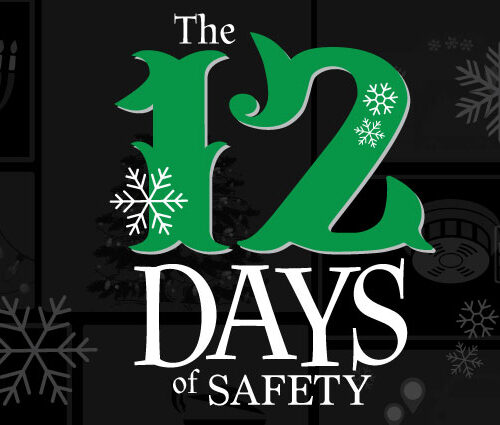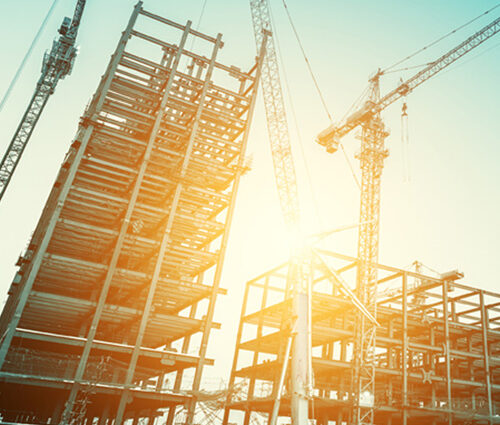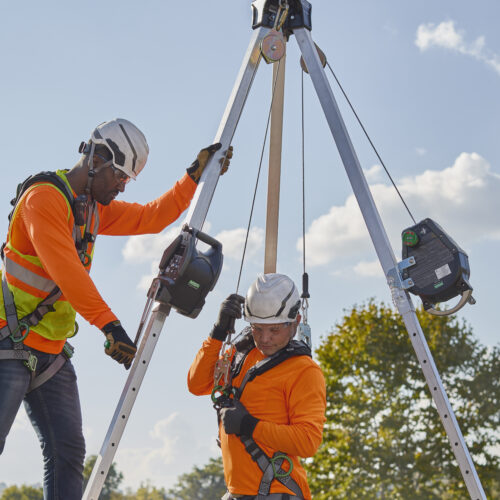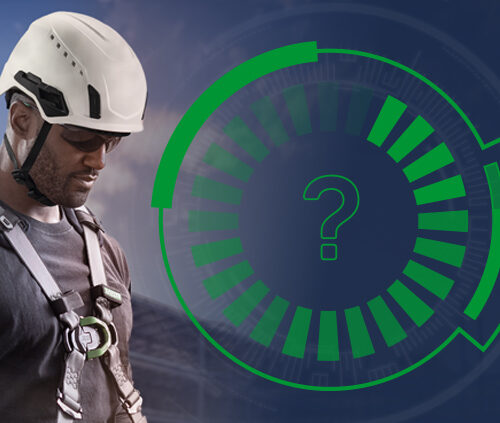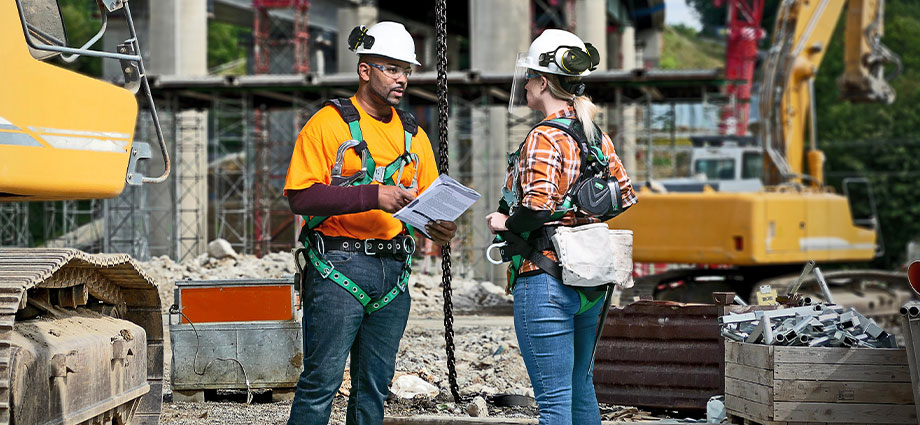
For many workers, working on top of an elevated surface or structure is a daily actuality or eventuality. It’s also some of the most hazardous work on the planet.
In the 50 years since the U.S. Bureau of Labor Statistics (BLS) has been collecting and publishing occupational safety and health data for OSHA and policymakers to use to ensure safe and healthy working conditions for the American workforce, the rate of nonfatal injuries has continued to steadily decline.1 Unfortunately, this is not the case when it comes to falls from height.
Despite efforts to raise awareness of the inherent danger of at-height work and the continual training of workers on safety best practices, falls from elevation are still the leading cause of death for construction employees.2 According to the BLS, fatalities in the private construction industry are at their highest since 2007 – with an increase of 5% to 1,061 fatalities in 2019.3
Such numbers bring awareness to the importance of selecting appropriate fall arrest solutions. Here are 7 tips for where, when, and how self-retracting lifelines (SRLs) should be deployed for vertical fall arrest protection.
Safety advancement is already in the works, of course, with many employers taking their Safety Programs to the next level. Next-level safety planning should include an understanding of the hierarchy of fall protection.
The following 4-part hierarchy is a recommended starting point to determine which approach and fall protection system is best for the job – and the worker.
- Elimination: Obviously, this is the preferred solution to all fall hazards. Although elimination is not always possible, don’t overlook the fact that there is some control in identifying potential hazards and adjusting processes and procedures accordingly.
- Passive Fall Protection: This involves the use of physical barriers, such as guardrails, around unprotected edges. The Occupational Hazard and Safety Administration (OSHA) recommends in 29 CFR 1926.502(j)(5) that guardrail systems be used to prevent falling objects that can pose a hazard to workers.4
- Fall Restraint Systems: Using personal protective equipment (PPE) to restrict the worker’s range of access, fall restraint systems are erected in an attempt to prevent the worker from physically traveling to the fall hazard.
- Fall Arrest Systems: These work to stop the fall within acceptable force and clearance margins, leaving the worker to be rescued according to Safety Program procedures.
Another example of advancing fall prevention and protection is the growing trend of replacing lanyards and rope grabs with self-retracting lifelines (SRLs) as the safety standard. Like those two fall protection methods, SRLs are intended to reduce workplace injuries and fatalities from falls.
SRLs, however, are different in many ways than lanyards and rope grabs. SRLs are fast-acting fall arresters that limit free-fall distance and decelerate distance and fall arrest forces. Some SRL designs even allow the user freedom of movement. In addition to all those safety benefits, when compared with lanyards and rope grabs, SRLs typically last longer, retract on movement, offer faster lock-on, and are easier to store.
SRLs offer dependable fall protection and are specifically designed to allow the wearer to have hands-free fall protection. Here’s how they work:
- A synthetic line or metallic cable is attached to the worker’s harness.
- This cable automatically extends and retracts from a floor or overhead anchored (stationary unit) while the worker moves about the jobsite.
- In the event of a sudden fall, the SRL locks on to the anchored unit, arresting the force of the fall.
- An energy absorption system automatically kicks in to limit the impact of the force on the worker’s person.
There are numerous situations where fall protection is necessary. So, it’s important to consider where it will be used (the environment) and what the worker will be doing while using it (the application). Environment and application are key to selecting the proper SRL.
For example, if the wearer is working in an environment with corrosive hazards, such as a coastal location or petrochemical site, then risks, such as accelerated corrosion for metal parts or potential degradation for plastics and composites, must be considered. The SRL manufacturer should be able to help with specification options.
Application, too, plays a crucial part in determining the proper SRL for the job. For example, working with solar panels on a rooftop or servicing an aircraft wing obviously require care in order to prevent the equipment from damaging products and surfaces. A self-retracting lifeline constructed of synthetic webbing will do a better job of minimizing the risk of such damage. On the other hand, the presence of sharp edges that could sever a synthetic fabric line will require an SRL constructed of materials specific to leading edge applications. Similarly, a construction site may have abrasive concrete dust that will degrade synthetic lines, so it, too, will require a robust solution. Fortunately, there are SRL options for both – and more.
In order to arrest a fall, an SRL must be anchored to a strong and stable point. Understanding the anchor point is critical to making an appropriate product choice.
Things to consider include:
- Type of anchor
- Location of the anchor
- Distance between the anchor and the working point
- Distance of the anchor from the edge/fall hazard
- Fall clearance (allowing enough space for a fall to happen in the safest way possible)
Here are the two most common types of anchors, along with their key benefits:
- Overhead Anchor: This is the standard way to attach an SRL. The SRL attaches to a carabiner or point above the workspace. This approach is traditionally used when there’s been an investment in infrastructure. Key Benefit: There’s less distance to fall in the event of a slip or trip.
- Foot-level Anchor: In this popular approach, the anchor is positioned at foot- or deck-level with the SRL attached to it. It should be noted that with this type of anchor, the SRL will be at a 90-degree angle to the fall should there be a slip or trip. On many jobsites, the edge of the work area, such as a rooftop or other structure, can be sharp. So, it’s essential to understand that if a foot-level anchor is used, your SRL may need to be rated for leading edge work. Key Benefit: This type of anchor is easy to use because there’s no need to lift anything overhead.
SRLs are also inherently versatile and may be used across a wide range of industries, as well as in horizontal, overhead, and leading-edge applications. From vertical access via pylons, turbines, water towers, and confined spaces, to loading and maintenance bays, assembly lines, silos, rooftops – and the building and construction industry in general – SRLs help take the guesswork out of equipment selection.
Since fall clearance, which is the minimum vertical distance required between a worker’s feet and a lower level, can vary at different points on the working area, it’s wise to consider using a self-retracting lifeline over another type of fall protection device. That’s because an SRL can accommodate variances while it remains under tension, automatically adjusting the line.
Ultimately, the design of an SRL directly impacts safety and service-life cost. Human life is priceless, and employers have a duty of care to reduce the risks faced by their workers.
While all products are certified to the same standard, there’s another crucial consideration: All products are not created equal.
Entry-level, economy-priced PPE is far less likely to offer the same performance and durability as high-quality, premium-engineered solutions.
Reduced upfront costs can lead to a false economy of savings, whereas investing in the best equipment at the start can yield lifetime savings that result in lower total cost of ownership and better return on investment (ROI).
For example, equipment that is inherently designed to be serviceable in the field and minimize repair times can dramatically reduce costly delays and downtime. Smart retraction dampening technology, for example, can reduce cable retraction speed significantly. This not only increases safety, it limits damage to the product and surroundings. Again, this minimizes downtime and further maximizes product lifespan.
Check out the standard and leading edge SRLs available from MSA to find the fall protection safety solutions that are right for your needs.
Sources:
1 U.S. Bureau of Labor Statistics, Beyond the Numbers, Vol. 9, Nearly 50 years of occupational safety and health data
2 U.S. Department of Labor Occupational Safety and Health Administration, National Safety Stand-Down to Prevent Falls in Construction
3 BLS.gov, National Census of Fatal Occupational Injuries in 2019
4 Occupational Safety and Health Administration, Fall Protection in Construction



